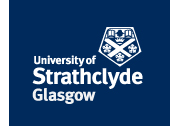| Description: |
The 1996 Russian presidential election offered voters a choice between candidates representing competing regimes. President Boris Yeltsin was not just the defender of the 1993 constitution as its author; his chief opponent, Communist Party leader Gennadii Zyuganov, defended the Soviet system. The first section briefly describes the strategic problems of candidates, and the second profiles the social, economic and political characteristics of the electors whose votes they sought, showing how these correlated with support for the two main contenders. Since correlation is not the same as causation, the next two sections use multivariate statistical analysis to show the identify the varied influences affecting preferences expressed in the first round--and the few but critical concerns in the 'who, whom?' second ballot. The implications of a negative majority are considered in the conclusion.
|


